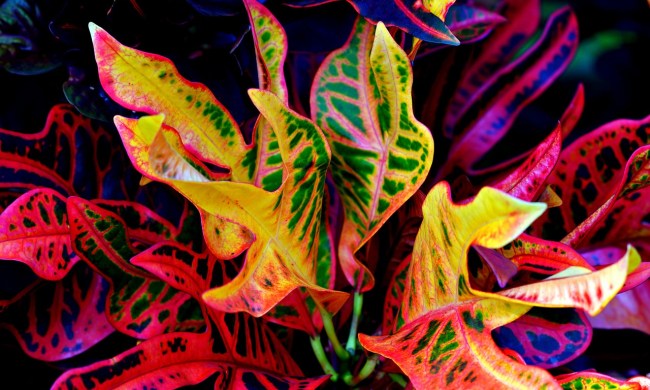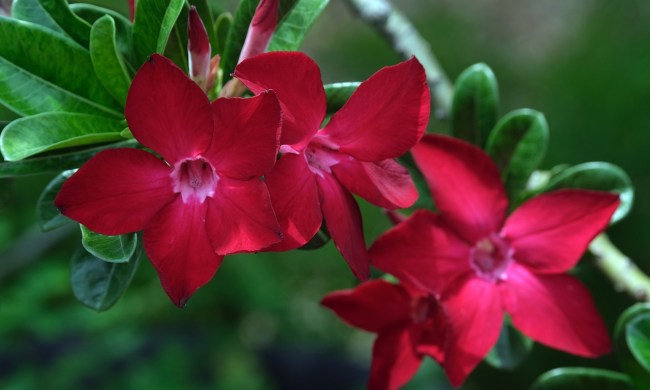Monsteras are gorgeous houseplants known for their striking leaf shapes. These lovely plants come in a range of sizes and shades, but some of the most popular monstera species and varieties are the variegated monsteras. These monsteras can be green and white or green and yellow, and they make stunning additions to any home. However, some gardeners find them more difficult to care for than other, non-variegated monsteras. Wondering why that is and how to take care of them? This guide has the answers.
Why are variegated monsteras more difficult to care for?

Variegated plants are not inherently more difficult to care for, but they do have slightly different needs than their solid-colored counterparts. If you aren’t aware of this difference, you may notice your plant struggling to thrive. However, being prepared for this difference and making a few simple adjustments to your care routine will save you a ton of trouble. The difference between variegated and non-variegated plants comes down to chlorophyll.
Chlorophyll gives leaves their green color, and it also plays an important role in absorbing sunlight to turn into energy for your plant. As you might have guessed, the lighter sections on variegated leaves have less chlorophyll in them. This makes them lighter green, yellow, or white depending on the amount of chlorophyll present, and it also prevents those sections from absorbing as much sunlight. However, the paler color is also more sensitive to intense sun, making these areas more likely to develop sunburns. Making sure that your variegated plant gets enough extra light without getting too much light can be tricky, but it is doable.
Basic monstera care

Some monstera care elements are the same, regardless of whether your monstera is variegated or not. Plant your monstera in well-draining soil, and be sure to use a container with proper drainage holes. Many gardeners see success with potting soil that contains coco coir or peat moss, although some say their monsteras do just fine without it.
Water your monstera whenever the soil feels dry to the touch. The soil should be dry at least a few inches down. Water the soil thoroughly, and avoid getting the leaves wet as much as possible. On average, you should water your monstera once every week to every other week.
Fertilize your monstera with a balanced or nitrogen-heavy fertilizer during spring and summer. Any fertilizer formulated for indoor foliage plants should work just fine, and you can use granulated fertilizer or liquid fertilizer. Be sure to read all the directions and dosing information on the package before you start.
Variegated monstera care

The primary difference in variegated monstera care is sunlight. Non-variegated monsteras grow best in bright, indirect light, but can also tolerate some low-light environments. For variegated monsteras, it’s important to keep them in bright, indirect light and avoid darker areas. Variegated plants in shadier places may start to revert or lose their variegation. This happens when the plant struggles to get enough light and begins producing more green leaves to compensate. Over time, some variegated plants can lose their variegation entirely. To prevent this, keep your variegated monstera in a well-lit area.
However, you should avoid placing your variegated monstera in direct sunlight, as this can cause sunburns. If the only sunny place available for your variegated monstera is in direct sunlight, there are a few things you can do to help alleviate the sun stress. First, if you have the option, place your plant in direct sunlight during the morning and move it away during the afternoon. While this isn’t as effective as having bright, indirect light throughout the day, it will help prevent burns. Additionally, rotating your plant so the sun isn’t always hitting the same leaves can spread the effect out, giving the leaves a chance to rest and recover.
Signs to watch for in your variegated monstera

Monitoring your variegated monstera’s leaves is the easiest way to keep an eye on their health. If the leaves are losing their variegation, turning a pale brown or yellow, wilting, smaller than normal, or are growing primarily to one side, then your monstera isn’t getting enough light or is getting uneven light. Growth on one side of the plant but not the other indicates that one side of the plant is getting more sun than the other, and you should move or rotate the plant to help balance it out.
If your monstera is developing uneven black or brown patches, especially on the tips of the leaves, then this may be a sunburn. While other factors can cause a plant’s leaves to turn brown, sunburns are easier to identify as the burn should align with where the sunlight touches the leaves.
Variegated monstera care isn’t too different from regular monstera care, but it is just different enough to trip up an inexperienced plant owner. Now that you know what to expect and what adjustments to make, you’re better prepared to bring home a gorgeous monstera albo or other variegated monstera. With these tips and a little trial and error, you can enjoy your own beautiful variegated monstera plant before you know it!




